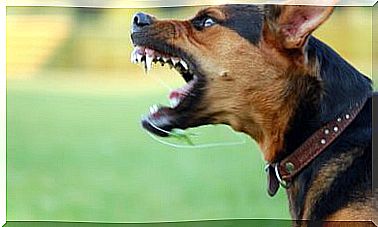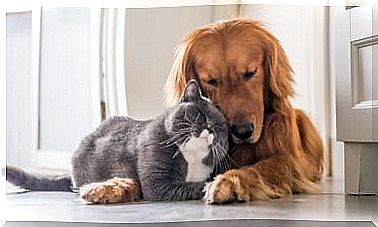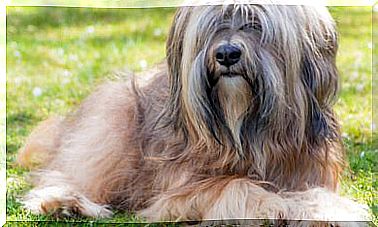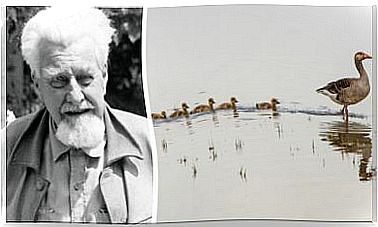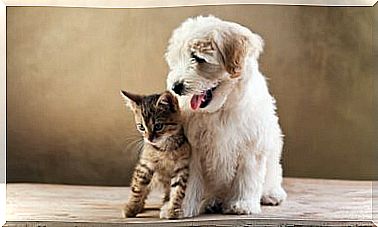The Red-billed Oxpecker: Characteristics And Feeding

The red- billed oxpecker ( Buphagus erythrorynchus ) is a small bird of the passerine family. It is widespread in Africa, south of the Sahara and can always be seen in association with herds of large mammals, as these curious animals feed on parasites on the skin and hair of their hosts.
Like many other birds, their presence benefits other individuals, who tolerate them patiently on their backs. The oxpecker can be seen feeding on the invertebrates that settle on giraffes, buffalo, wildebeest, kudus, impalas, zebras, rhinos, and hippos.
The red-billed oxpecker and its characteristics
The oxpecker is a small, olive-brown bird with a characteristic yellow beak with a red tip. The eyes have an eye-ring of a very striking reddish-orange color. Juveniles lack these colors, since they appear as the specimens grow.
Oxpeckers move in groups emitting a distinctive call, similar to crackle. They are found in the savannah and farmland, where large wild ungulates and domestic cattle inhabit.
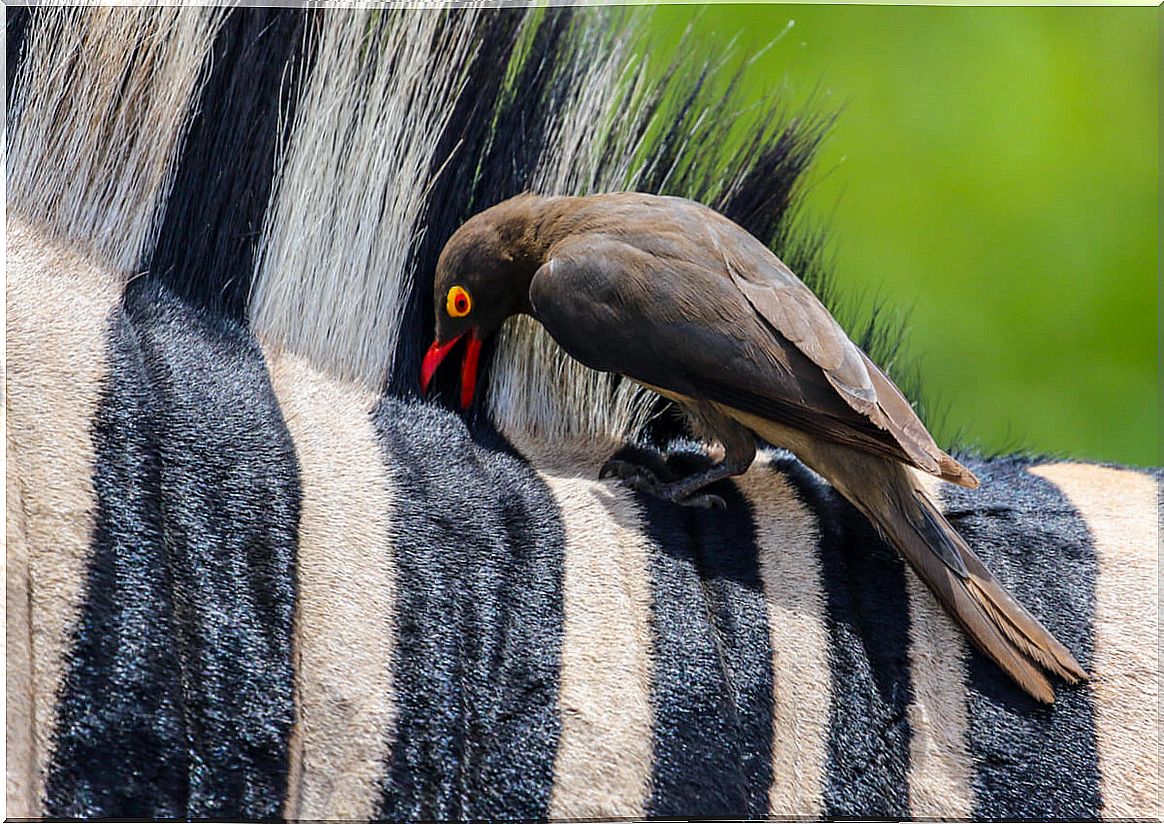
How does this bird eat?
The piquigualdos nimbly climb the back of their hosts, which scavenge ticks, mites and other ectoparasites. In addition to this, they can also drink the host’s blood that they obtain through the wounds produced by their beaks. What at first is a symbiosis, can become a parasitism under certain conditions.
It should be noted that among the subspecies there are food preferences. For example, the yellow-billed oxpecker has a predilection for buffalo, and when these are rare, the rhinoceros, giraffe, zebra and African wildebeest are its main hosts.
The relative densities of different hosts in an area are an important factor motivating the choice of specific hosts in these birds. The tolerance of mammals to the foraging activity of the red-billed oxpecker is also an essential parameter when choosing a table or, in this case, back.
In captivity, experiments on these preferences have been carried out taking into account the parasite load of the hosts. Red-billed oxpeckers appear to take into account the abundance and quality of ticks on their host’s skin.
These birds spend more time feeding on the contents of wounds when the parasite load is low compared to a medium and high parasite load. In addition, they are also selective with the type of ticks ingested, since they prefer blue ticks to others.
Sleeping and eating on a giraffe
The number of birds that can be feeding at the same time on a single host can be quite large. A specimen of giraffe has been spotted with up to 56 different red-billed oxpeckers!
When these birds perch on their ‘parasite provider’, they quickly peck at the skin until they cause a wound that begins to bleed. Once the wound is open, they turn their beak on its side and lick the blood. They alternate this activity with searching for parasites – such as ticks – or dead tissue around old wounds.
The creation of wounds or their permanence calls into question the position of this bird as a mutualist, since it increases the chances of infection of the host by keeping the wounds open.
The armpits of giraffes are a very safe and comfortable place for these birds. Thanks to their strong legs, oxpeckers cling to them and remain protected from other predators. Also, this is one way to ensure breakfast the next day.
The researchers believe that this behavior may also be a strategy to deter competitors. On the other hand, it is essential to note that the red-billed oxpeck only move towards the trees or bushes when it is time to lay their eggs and nest the chicks, as they will not find their food on plant matter.
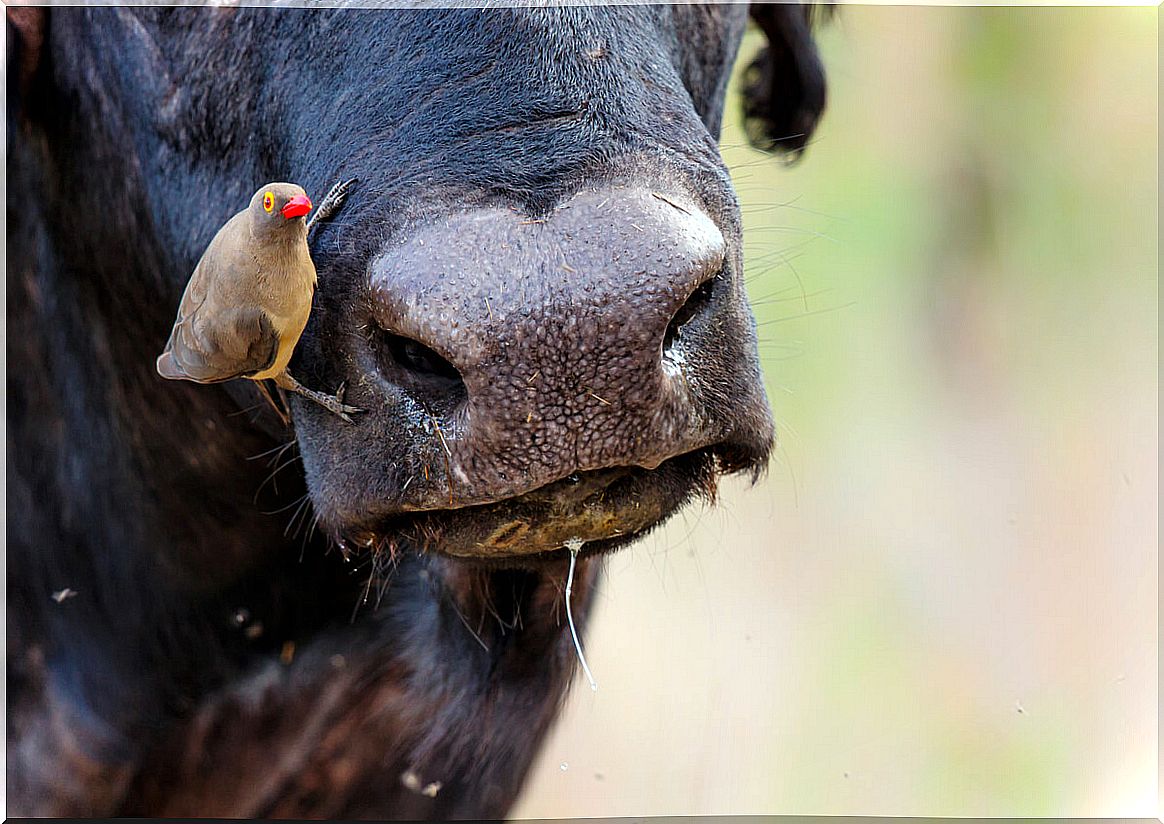
Other birds that benefit from livestock
The Cattle Egret is known to prey on cattle or horses, but also elephants, camels, zebras, deer, and other large mammals. In nature, not even parasites are wasted.
In this case, this bird does not feed on its parasites, but takes advantage of the presence of these animals to drive away insects from the grass, so that the herons can easily capture them. Cattle egret can sometimes follow tractors or lawnmowers for the same purpose.


